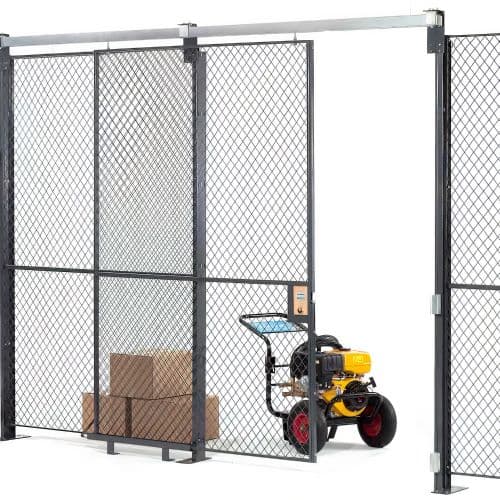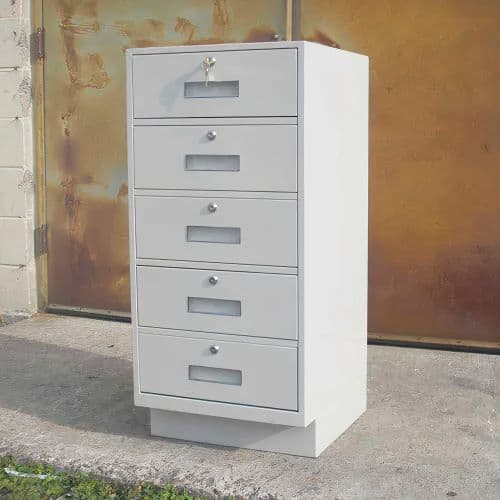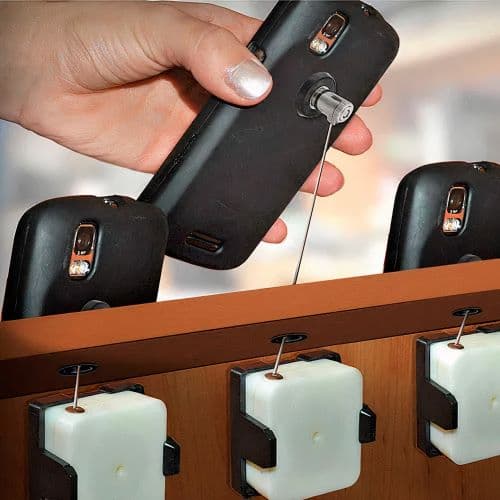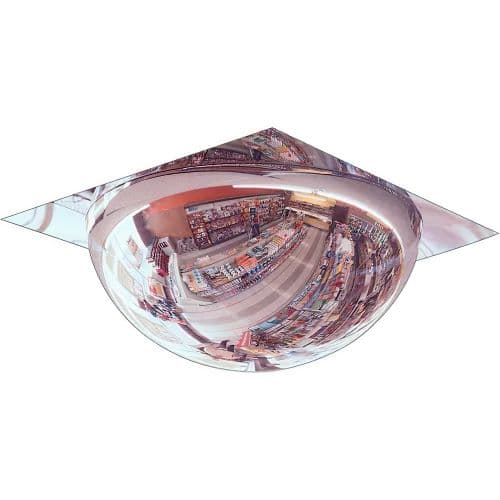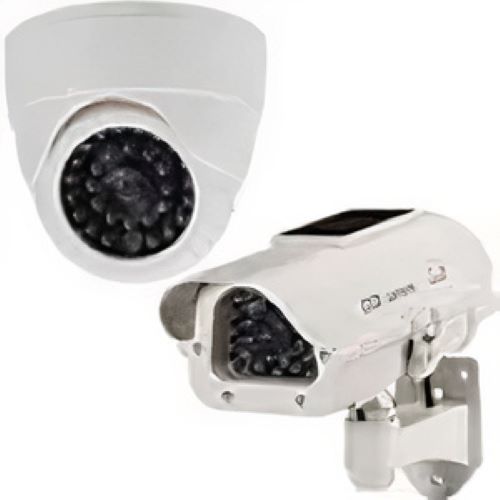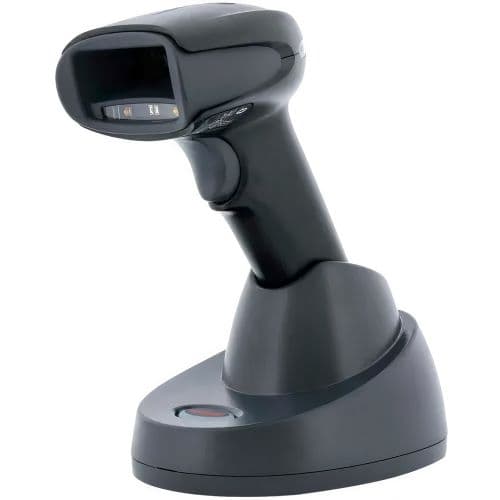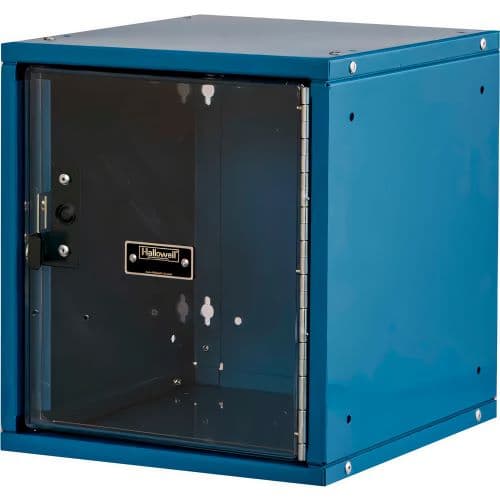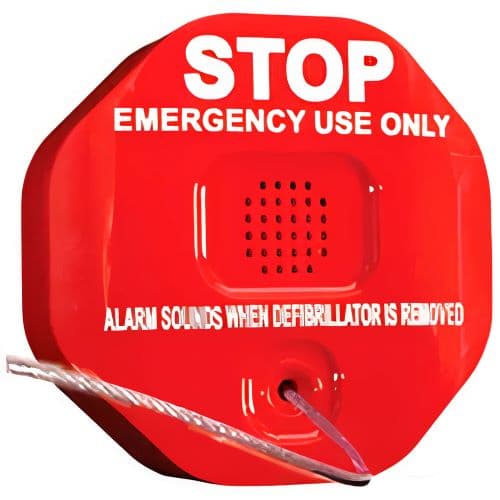Theft & Crime Rate Surge Calls for a Heightened Retail Security Systems
Retail crime is no joke. As technologies used for theft evolve, retailers must keep up with solutions to safeguard merchandise as well as employee and patron safety. Some recent surveys in the retail industry reveal some telling trends in retail security:
Retail Security Trends
- 37% of retailers are exploring technologies, including AI.
- 35% are considering body-worn cameras.
- 35% are delving into RFID technology.
- 40% are researching facial recognition technology.
Now more than ever, retail loss prevention specialists imagine a future with technology at the center of most retail theft prevention. While amazing technology is on the horizon, immediate actionable steps are crucial for right now.
The first question: is your security more focused on prevention or monitoring? Traditional security systems like security cameras and sensors work well for monitoring after the fact, but there are additional prevention measures (such as shatterproof display cases and mirrors, for example) that can add an extra layer of prevention. How do you think about your security? Start with the basics:
Consider Front of House & Back of House
First, think of your physical space. What kind of foot traffic do you have in your front of house retail space? What about storage space, break rooms, entrances, and exits in the back? Do you have well-defined and communicated employee safety procedures and wrongdoing deterrents? Are the displays set up for optimized security? It is essential to define your safety measures relative to your physical space as well as your employee population and customer base.
An Ounce of Prevention

The best way to recover from crime is to prevent that crime from happening in the first place. There are some basic steps to be as prepared as possible for retail asset protection:
- Assess: Conduct a comprehensive risk assessment. Take an honest look at your business’ strengths and vulnerabilities, both in the physical and cyber spaces. Consider both external and internal risks, including shoplifting, employee theft, operational errors, and organized retail crime. Do your homework to assess all potential threats.
- Get Organized: The old pencil and notebook don’t cut it anymore. Implement robust retail inventory management. Technology such as barcode systems or radio frequency identification (RFID) can accurately monitor stock levels, identify discrepancies, and quickly detect any irregularities. Conduct regular inventory audits to ensure accurate stock counts and help identify potential sources of loss. Elevate your inventory control systems to effectively track merchandise. Develop procedures for your brick and mortar location as well as an effective online store management system.
- Knowledge is Power: Train and educate your team through ongoing training on security protocols, risk awareness, and loss prevention strategies and practices in retail stock management. Train employees about suspicious behaviors, effective customer service techniques, and proper cash handling. When employees are well-trained, they can often be preemptive and nip problems in the bud.
- Keep an Eye Out: Use video surveillance and analytics. Where possible, deploy a video surveillance system in key locations such as entrances, exits, and point-of-sale locations. Advanced analytics can help identify patterns, detect suspicious activities and trigger real-time alerts. Plus, video surveillance can act as a deterrent and provide valuable evidence for investigations.
- Work Together: Build partnerships with nearby businesses, law enforcement agencies, and industry organizations. Regional or industry-wide crime prevention networks can help you stay informed about emerging threats and trends. Make your business a part of the community.
- Spell It Out: Implement clear return and refund policies to prevent fraud and abuse. It helps to require proof of purchase and a time limit for returns. Technology such as receipt verification systems or unique product identifiers can help deter fraudulent practices and identify suspicious patterns or trends.
Additional Prevention Techniques:
- Increased Guarding/Security Presence: Invest in visible security measures to deter potential wrongdoers.
- Limit Self-Checkouts: Sure, it’s convenient. But lack of oversight can lead to product loss. Restrict self-checkouts to a few items or specific types to minimize opportunities for theft.
- Lock Up High-Theft Items: Know your merchandise and identify sought-after items and displays. Utilize locking mechanisms for high-value and high-theft merchandise. Utilize safes and lockboxes and loss prevention equipment whenever appropriate.
- Control Showroom Floor Merchandise: Minimize merchandise on the showroom floor, with additional goods available in the back or online.
- De-Escalation Techniques: Train employees in de-escalation techniques to handle potential conflicts peacefully.
- Enhanced Detention Policies: Implement policies for the safe detainment of suspected shoplifters.
- Enhanced Checkout Security Procedures: Strengthen security measures at the checkout to prevent fraudulent activities.
Monitoring Systems
Keeping your eyes on your assets is a key part of retail inventory control. But - like most technologies - your monitoring systems need to evolve with the times. Retail cctv security systems improve with each generation. Consider investing in the latest technology to stay on the cutting edge.
Safety mirrors are a great tool to pair with most surveillance systems. In addition to optimizing visibility, these mirrors act as deterrents against theft and help reduce the risk of accidents in narrow aisles. Scope out your space to determine if dome or convex mirrors works best for you. Choose the that works best for your space.
People Come First

Remember - security is not just about protecting your merchandise. The safety of your employees and customers should be at the forefront of any safety plans. Some simple but important ways to prepare your employees for the worst:
- Emphasize Training: A well-prepared team member is an effective team member. Ongoing training is essential for ensuring that employees are confident and ready to handle various security situations.
- Regular Property Inspections: The best way to get ready is to stay ready. Regular inspections help identify and address potential problem areas, preventing accidents and ensuring a safe environment.
- Quick Response to Incidents: Leadership matters. A prompt and appropriate response from management is critical to prevent secondary impacts and ensures the safety of customers and employees.
- Plan for Disaster: If we’re lucky, the worst case scenario never happens. But unfortunately, extreme incidents like riots, organized crime, and looting is a part of doing business in today’s world. Establish protocols for evacuations, just in case.
- Know your high risk areas: High theft retails areas such as jewelry, cosmetics, perfume, coats, suits, and pharmacies create significant security risks. Also, restrooms and dressing rooms are at a high risk for property damage. Have plans in place to protect your staff and patrons.
- Safety Signage: Make sure all your high risk areas are clearly marked.
- Prevent Injury: So many injuries are due to poor training and planning. By establishing smart and well-communicated safety protocols, watch your injury claims reduce and your employee satisfaction grow.
When Things Get Serious
Sometimes, security needs rise beyond routine monitoring and loss prevention. The personal safety of employees and customers always trumps the protection of merchandise and property. When there is genuine risk of harm, it is important to equip your security staff with the best equipment to prevent the worst.
Security Measures Beyond Routine Monitoring and Loss Prevention
- Have an evacuation plan in case of riots and looting. Let your employees know - no merchandise is worth your safety.
- Body cams are becoming more and more commonplace in security. Liability is a huge issue, so make sure you are covered by protecting your employees, customers, and your business. Beyond serious security issues, body cams can mitigate risk with injury claims.
- Tactical gloves and stab resistant vests add that extra layer of protection for situations where bodily harm is a possibility. Safety is always the number one priority, so give your personnel the protection they need.
- When crowd control is called for, get creative about your use of barricades, gates, stanchions, and turnstiles. Sometimes, a little tape or a rope chain can go a long way to managing crowds.
- Give your staff the ability to communicate easily during a crisis with two-way radios. Hold regular trainings for potential high-risk situations so your staff is ready to go.
- Staff turnover in high risk security positions is common. Make sure you have plans in place to change passwords, keys, and other measures to ensure only authorized personnel have access to your high security areas.
The Incredible Shrinking Inventory
One important issue retailers face is how to avoid “shrink” - that seemingly magical disappearance of merchandise that can’t be accounted for by your tracking system. Shrink can be due to a few factors: customer or employee theft, administrative errors, or damaged goods. With a few simple steps, shrink can be ‘shrunk’:
- Smart Recruitment: According to stats, 42% of shrink is due to employee theft. While hiring can be time consuming, spending the time will almost always pay off. Identify a role that is in charge of tracking inventory and staff it with your most ethical employee.
- Cross Checking: If a dedicated inventory tracker isn’t possible, implement cross checking procedures with multiple employees to protect yourself from one rogue unethical team member.
- SKU and Barcodes: By electronically tracking all merchandise with SKU (stock keeping unit) and barcode systems, you can prevent a lot of confusion and hone in on missing materials. As a bonus, it’s a great way to track what is selling.
- Clearview Lockers: By creating employee storage units that are visible for inspection, you can discourage any covert activities on your premises. Digilockers are a great option, complete with the security of an installed, electronic keypad lock
- Cart Poles: For supermarkets and large shopping centers, prevent those wandering carts by equipping your carriages with anti-theft brackets and poles.
- Consistent Inventory Audits: Knowledge is power. The more you know about your current merchandise, the easier you can solve - and prevent - shrink. In addition to full audits, it is smart to conduct periodic inventory level spot checks. By tracking the dates and times of inventory dips, you can help prevent shrink. If possible, pin merchandise with tracking devices and used locked cupboards whenever appropriate.
- Security Security Security! Having a tight security system should be a no-brainer. CCTV cameras and anti-theft alarms are a must.
The retail world carries inherent risks. But by preparing for the challenges of theft and security risks and investing in prevention, we can deliver to our team and our customers something priceless: peace of mind.
The information contained in this article is for informational, educational, and promotional purposes only and is based on information available as of the initial date of publication. It is the reader’s responsibility to ensure compliance with all applicable laws, rules, codes and regulations. If there is any question or doubt in regard to any element contained in this article, please consult a licensed professional. Under no circumstances will Global Industrial® be liable for any loss or damage caused by your reliance on this article.
